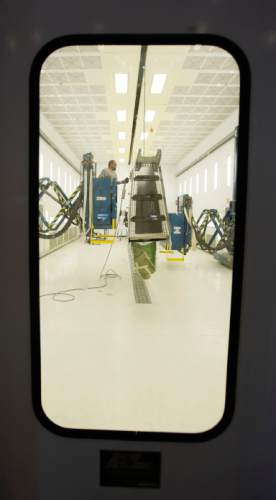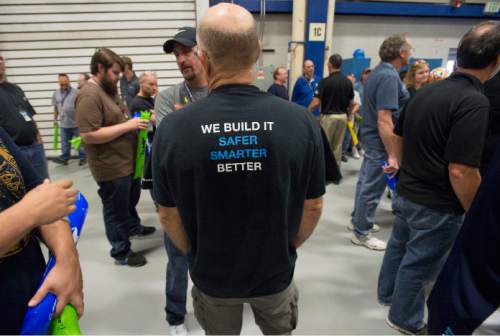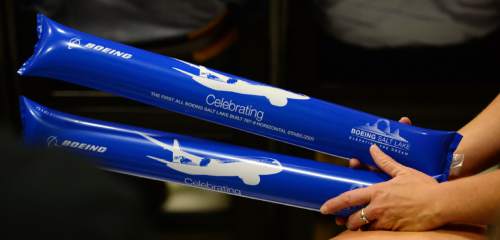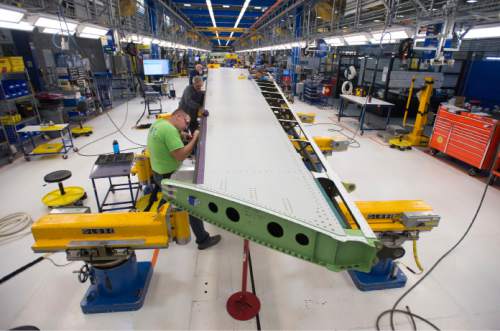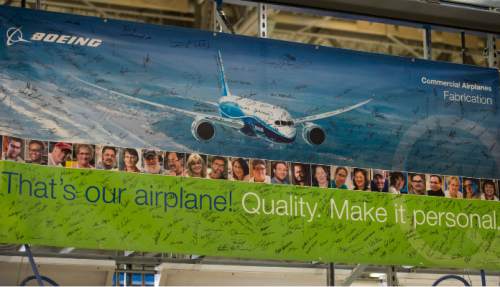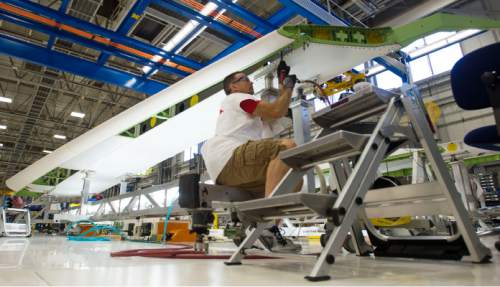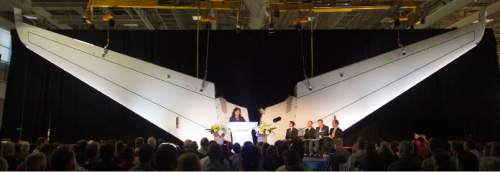This is an archived article that was published on sltrib.com in 2015, and information in the article may be outdated. It is provided only for personal research purposes and may not be reprinted.
The first entirely Utah-made 787-9 horizontal stabilizer, or tail of the airplane, was shipped Friday as a crowd of more than 700 cheered from Boeing Salt Lake's warehouse at Salt Lake City International Airport.
A specially designed semi can barely accommodate the piece headed to South Carolina. The tails will be used on planes flying for United, American and other airlines abroad.
Boeing employees at a 2-year-old plant in West Jordan manufacture components that are shipped 22 miles for final assembly at the company's airport facility, where a second assembly line has recently been added.
In addition to business leaders and employees, Friday's celebration brought Utah politicians, namely Lt. Gov. Spencer Cox and Salt Lake County Mayor Ben McAdams, who both addressed the crowd and acknowledged the company's contribution to the state's growing economy.
"For about seven months straight, we've been the No. 1 state in the nation for economic growth, and that's because of you [at Boeing], because of what's happening here," Cox said.
McAdams said Boeing's business has helped Salt Lake City with international trade and has enabled Utah to "lead the way out of the recession."
The national company utilizes at least 221 local suppliers and pumped more than $286 million into the Utah economy last year.
There are three commercial facilities in Salt Lake County alone, employing more than 760 workers in those locations, plus about 250 more who do Boeing defense work in Ogden and Little Mountain.
Cox referred to Boeing as "the perfect example" of the state government's "very large expectations" for businesses to protect the environment, treat employees well and give back to the community.
Boeing is a leading exporter, with 95 percent of its customers based outside of the U.S.
Jenette Ramos, vice president and general manager for Boeing Fabrication, spoke about what makes the 787-9 unique.
"It flies farther. It flies with more people. It flies with 20 percent more fuel efficiency, 20 percent less emissions," Ramos said. "It's a technological leap in so many ways."
Local general manager Larry Coughlin said in the field of aerospace, it's difficult to keep up with demand. The company is "sold out" of 787s, he said, and if someone were to order one today, they "would have to wait a number of years" before receiving the finished product.
But it might be worth the wait. Coughlin said the safe and efficient model is "a 30-year airplane," meaning those produced are expected to last three decades.
"It's been a heck of a journey," he said, referring to the years it has taken to develop and design the product. "But I'll tell you something, what's really cool is that as we built these and learned how to build this stuff, we also never missed a beat on the rest of our business."
The building process for this particular horizontal stabilizer, including a carbon-fiber interior that accounts for 50 percent of its weight, lasted about four months, according to Coughlin.


